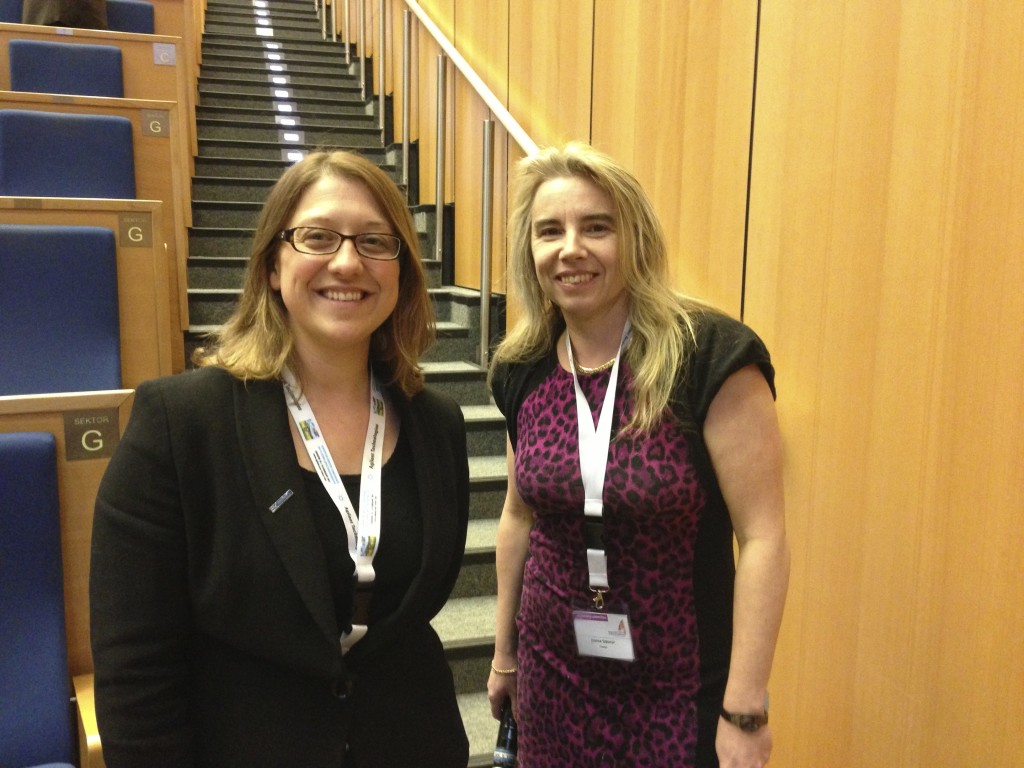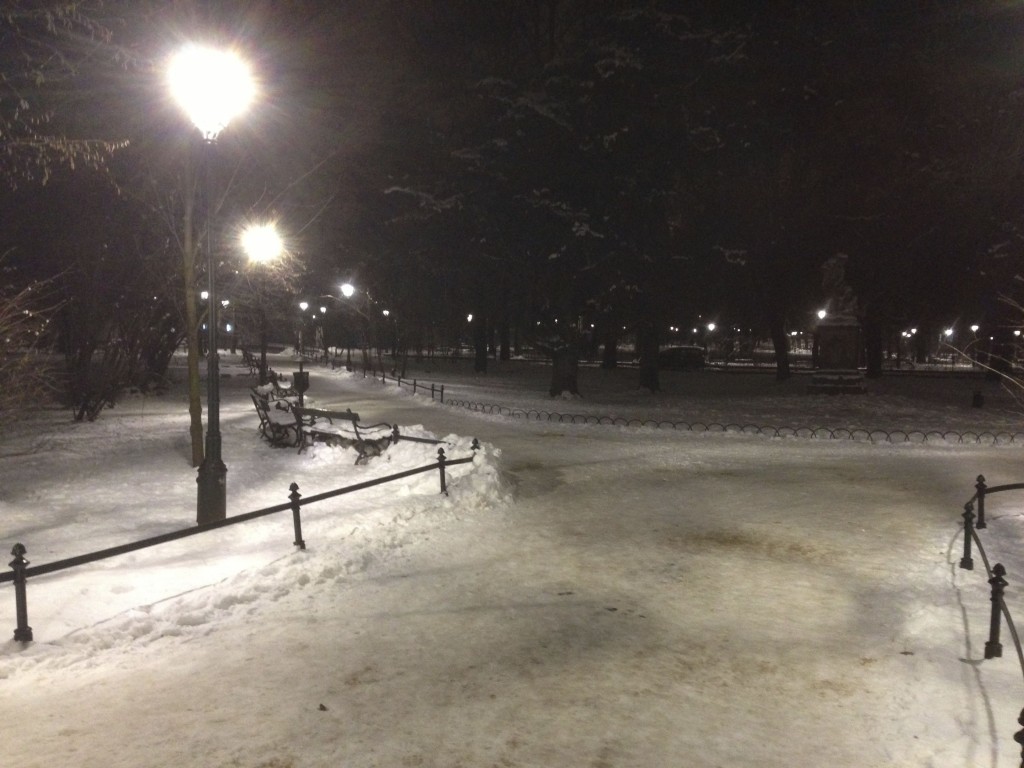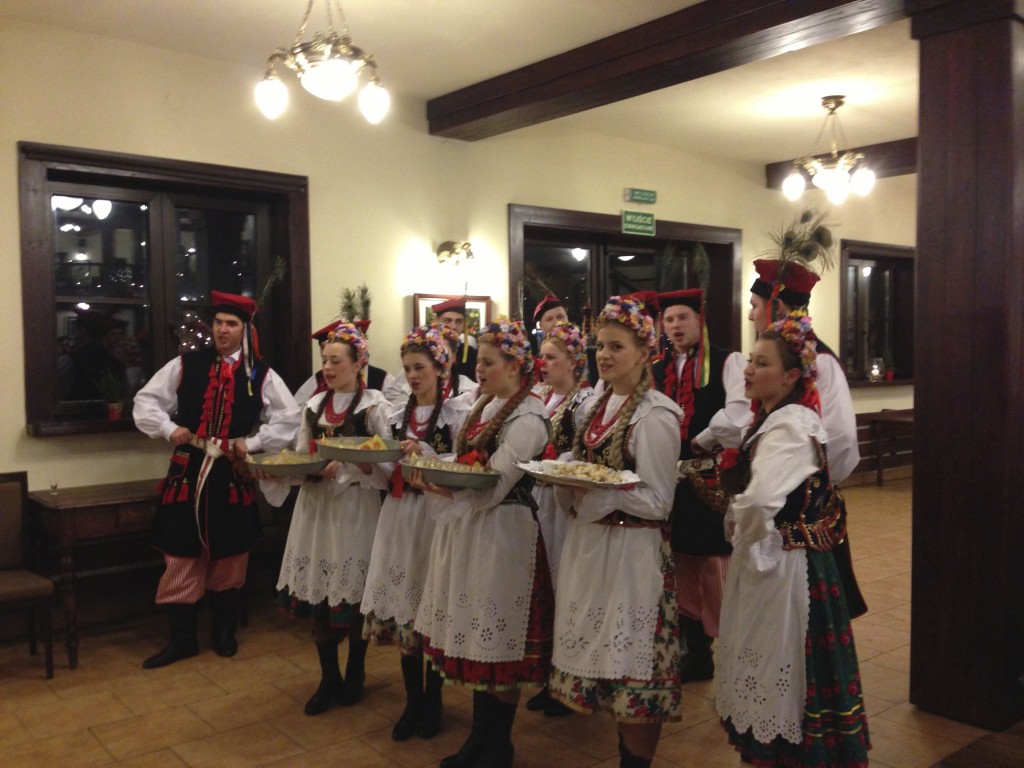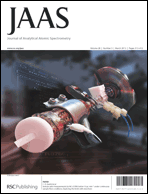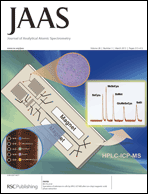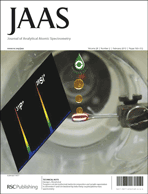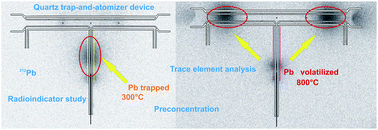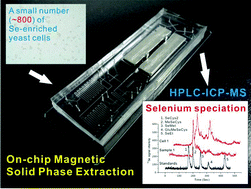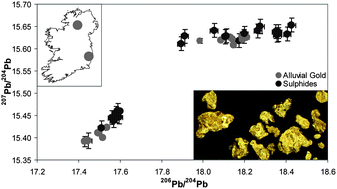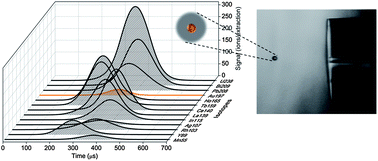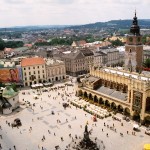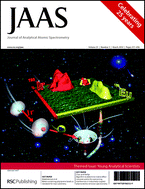This month sees the following articles in JAAS that are in the top ten most accessed:-
Atomic spectrometry update. Environmental analysis
Owen T. Butler , Warren R. L. Cairns , Jennifer M. Cook and Christine M. Davidson
J. Anal. At. Spectrom., 2013,28, 177-216 DOI: 10.1039/C2JA90077G
A prototype of a new inductively coupled plasma time-of-flight mass spectrometer providing temporally resolved, multi-element detection of short signals generated by single particles and droplets
Olga Borovinskaya , Bodo Hattendorf , Martin Tanner , Sabrina Gschwind and Detlef Günther
J. Anal. At. Spectrom., 2013,28, 226-233 DOI: 10.1039/C2JA30227F
Application of a micro-droplet generator for an ICP-sector field mass spectrometer – optimization and analytical characterization
Kaori Shigeta , Heike Traub , Ulrich Panne , Akitoshi Okino , Lothar Rottmann and Norbert Jakubowski
J. Anal. At. Spectrom., 2013, Advance Article DOI: 10.1039/C2JA30207A
Atomic spectrometry update. Industrial analysis: metals, chemicals and advanced materials
Simon Carter , Andy S. Fisher , Michael W. Hinds and Steve Lancaster
J. Anal. At. Spectrom., 2012,27, 2003-2053 DOI: 10.1039/C2JA90058K
Solution and laser ablation MC-ICP-MS lead isotope analysis of gold
Christopher Standish , Bruno Dhuime , Robert Chapman , Christopher Coath , Chris Hawkesworth and Alistair Pike
J. Anal. At. Spectrom., 2013,28, 217-225 DOI: 10.1039/C2JA30277B
Atomic spectrometry update—X-ray fluorescence spectrometry
Margaret West , Andrew T. Ellis , Philip J. Potts , Christina Streli , Christine Vanhoof , Dariusz Wegrzynek and Peter Wobrauschek
J. Anal. At. Spectrom., 2012,27, 1603-1644 DOI: 10.1039/C2JA90045A
Speciation of selenium in cells by HPLC-ICP-MS after (on-chip) magnetic solid phase extraction
Beibei Chen , Bin Hu , Man He , Qian Huang , Yuan Zhang and Xing Zhang
J. Anal. At. Spectrom., 2013,28, 334-343 DOI: 10.1039/C2JA30280B
Revealing hidden paint layers in oil paintings by means of scanning macro-XRF: a mock-up study based on Rembrandt’s “An old man in military costume”
Matthias Alfeld , Wout De Nolf , Simone Cagno , Karen Appel , D. Peter Siddons , Anthony Kuczewski , Koen Janssens , Joris Dik , Karen Trentelman , Marc Walton and Andrea Sartorius
J. Anal. At. Spectrom., 2013,28, 40-51 DOI: 10.1039/C2JA30119A
Isotope ratio measurements by MC-ICPMS below 10 µL min-1 under continuous sample flow conditions. Exploring the limits with strontium
E. Paredes , D. Goitom Asfaha and C. R. Quétel
J. Anal. At. Spectrom., 2013,28, 320-326 DOI: 10.1039/C2JA30209H
Atomic absorption spectrometric determination of Al3+ and Cr3+ after preconcentration and separation on 3-mercaptopropionic acid modified silica coated-Fe3O4 nanoparticles
Mohammad Hossein Mashhadizadeh and Mitra Amoli-Diva
J. Anal. At. Spectrom., 2013,28, 251-258 DOI: 10.1039/C2JA30286A
Why not take a look at the articles today and blog your thoughts and comments below.
Fancy submitting an article to JAAS? Then why not submit to us today or alternatively email us your suggestions.











